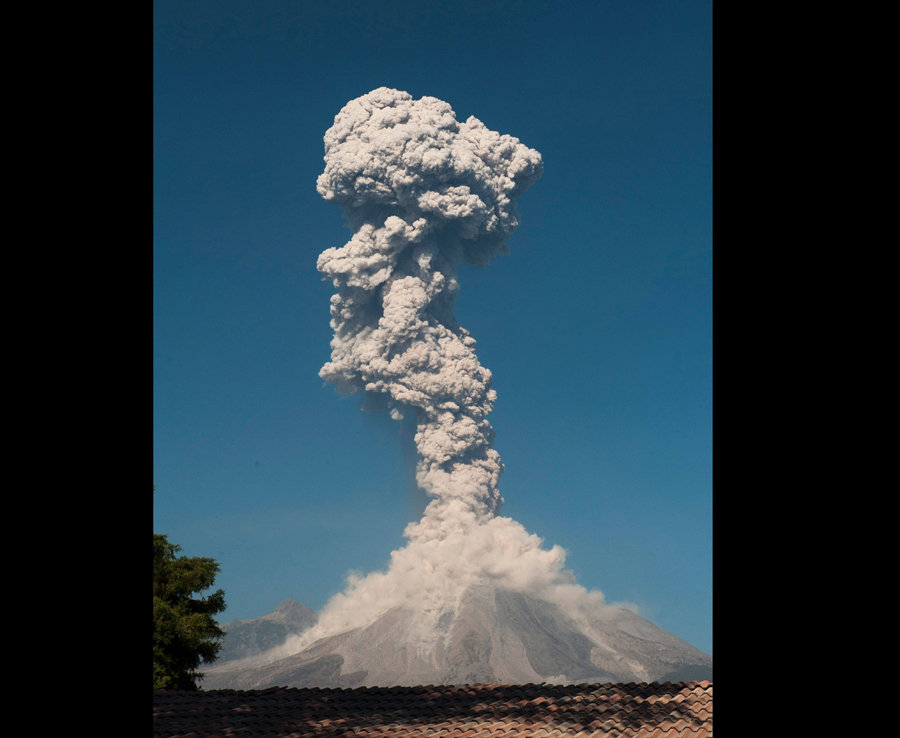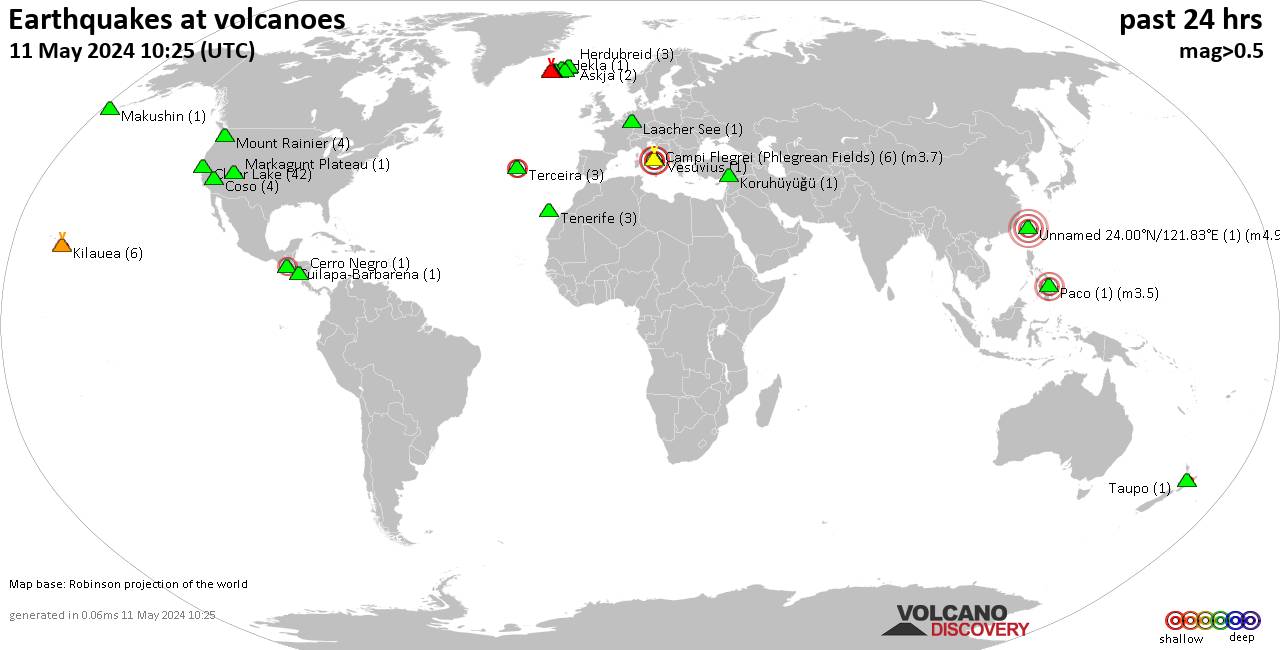https://www.facebook.com/VolcanoMonitor/
Shallow earthquakes near active volcanoes during the past 24 hours (update 19:39, Sunday, 24 Sep 2017)
Link for links: In
Red ( Ring of Fire)
Akyarlar volcano (Turkey): 11 earthquakes of magnitudes between M0.8 and M4.2 at hypocenter depths of 15.7-2.0 km during the past 24 hours
Bardarbunga volcano (Iceland): 2 earthquakes of magnitudes between M1.8 and M2.6 at hypocenter depths of 4.4-1.1 km during the past 24 hours
Brennisteinsfjöll volcano (Iceland): 1 earthquake of magnitude M1.3 at 7.9 km depth 9 hours ago
Cancanajag volcano (Central Philippines): 1 earthquake of magnitude M2.7 at 1.0 km depth 11 hours ago
Clear Lake volcano (California): 12 earthquakes of magnitudes between M0.4 and M1.6 at hypocenter depths of 14.6-0.2 km during the past 24 hours
Coso volcano (California): 2 earthquakes of magnitudes between M0.6 and M1.0 at hypocenter depths of 3.7-2.7 km during the past 24 hours
Grímsnes volcano (Iceland): 1 earthquake of magnitude M0.6 at 0.7 km depth 15 hours ago
Grímsvötn volcano (Iceland): 1 earthquake of magnitude M1.0 at 3.0 km depth 19 hours ago
Katla volcano (Iceland): 3 earthquakes of magnitudes between M0.7 and M1.4 at hypocenter depths of 1.1-0.1 km during the past 24 hours
Kilauea volcano (Hawai'i (Big Island)): 4 earthquakes of magnitudes between M1.8 and M2.7 at hypocenter depths of 6.4-1.0 km during the past 24 hours
Klyuchevskoy volcano (Central Kamchatka Depression): 1 earthquake of magnitude M0.8 at 1.4 km depth 21 hours ago
Krísuvík volcano (Iceland): 4 earthquakes of magnitudes between M0.4 and M1.3 at hypocenter depths of 8.6-4.4 km during the past 24 hours
Long Valley volcano (California): 4 earthquakes of magnitudes between M0.8 and M2.5 at hypocenter depths of 4.0-1.4 km during the past 24 hours
Mammoth Mountain volcano (California): 6 earthquakes of magnitudes between M0.9 and M2.0 at hypocenter depths of 3.7-0.1 km during the past 24 hours
Mount Rainier volcano (Washington): 7 earthquakes of magnitudes between M0.2 and M1.1 at hypocenter depths of 0.9-0.1 km during the past 24 hours
Nisyros volcano (Greece): 1 earthquake of magnitude M2.0 at 12.7 km depth 24 hours ago
Reykjanes volcano (Iceland): 3 earthquakes of magnitudes between M0.7 and M2.0 at hypocenter depths of 6.9-0.8 km during the past 24 hours
Salton Buttes volcano (California): 5 earthquakes of magnitudes between M1.2 and M2.0 at
hypocenter depths of 2.1-1.0 km during the past 24 hours
Theistareykjarbunga volcano (Iceland): 1 earthquake of magnitude M0.9 at 4.2 km depth 32 minutes ago
Ugashik-Peulik volcano (Alaska Peninsula): 1 earthquake of magnitude M2.7 at 0.6 km depth 15 hours ago
Vatnafjöll volcano (Iceland): 1 earthquake of magnitude M1.9 at 10.0 km depth 10 hours ago
Note: This is not a complete list because some areas (e.g. N-America, Europe, NZ) have much better coverage of small earthquake detection than others.


